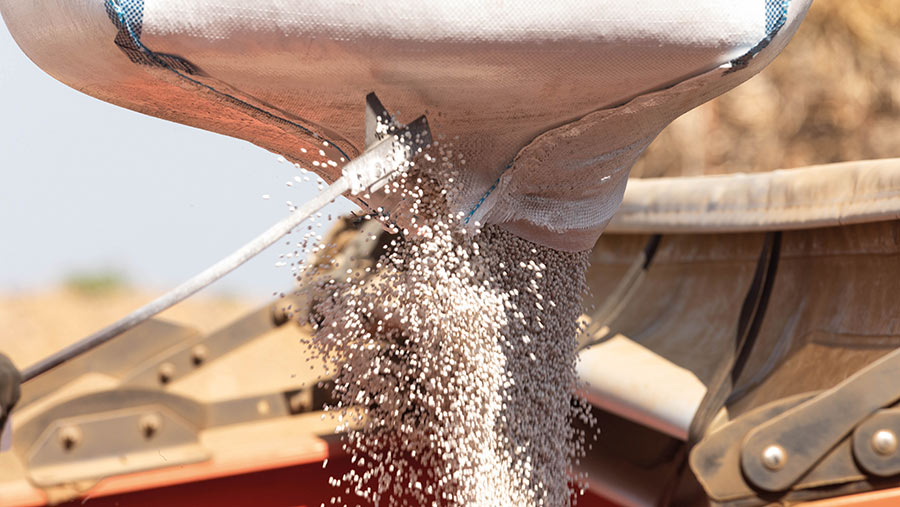Urea demand grows on both price and supply issues
 © Tim Scrivener
© Tim Scrivener Nitrogen markets are quiet, but moving, with urea prices firming on the back of some large sales by Egypt.
Concerns over further reductions in European ammonium nitrate (AN) production as a result of surging gas prices have added to the demand for urea.
Aside from the high gas cost, which means many are producing ammonia at a loss, European manufacturers are also under pressure to reduce gas consumption ahead of the winter.
The price differential per kilogramme of N between AN and urea has been the prime driver for UK farmers to switch, with merchants and co-ops seeing a significant move to urea.
See also: Gants awarded to increase biomass crop efficiency
There is a wide range of offers for urea, priced in a range from £735/t to £760/t on farm for delivery anywhere between October and January, although there are some August offers included in that range.
Prices at the lower end of the range generally denote delivery at seller’s call, while some offers are for payment delayed to January.
This compares with UK-manufactured AN at £850-£860/t for August and September on normal payment terms. The degree of switching to urea has reduced the pressure on CF Fertilisers delivery lead times, say merchants.
Imported AN is up to £55/t cheaper than UK AN in some regions, although the discount drops to £35/t in others, with good availability of both Pulan and Lithan.
Straight phosphate and potash products remain at elevated levels, with phosphate fairly steady, but potash firmer, despite an anticipated reduction in use because of the high prices.
August and September deliveries of triple superphosphate are priced at £905-£920/t delivered on 28-day payment terms, diammonium phosphate at £1,050-£1,060/t and muriate of potash ranging from £738/t to £785/t.
